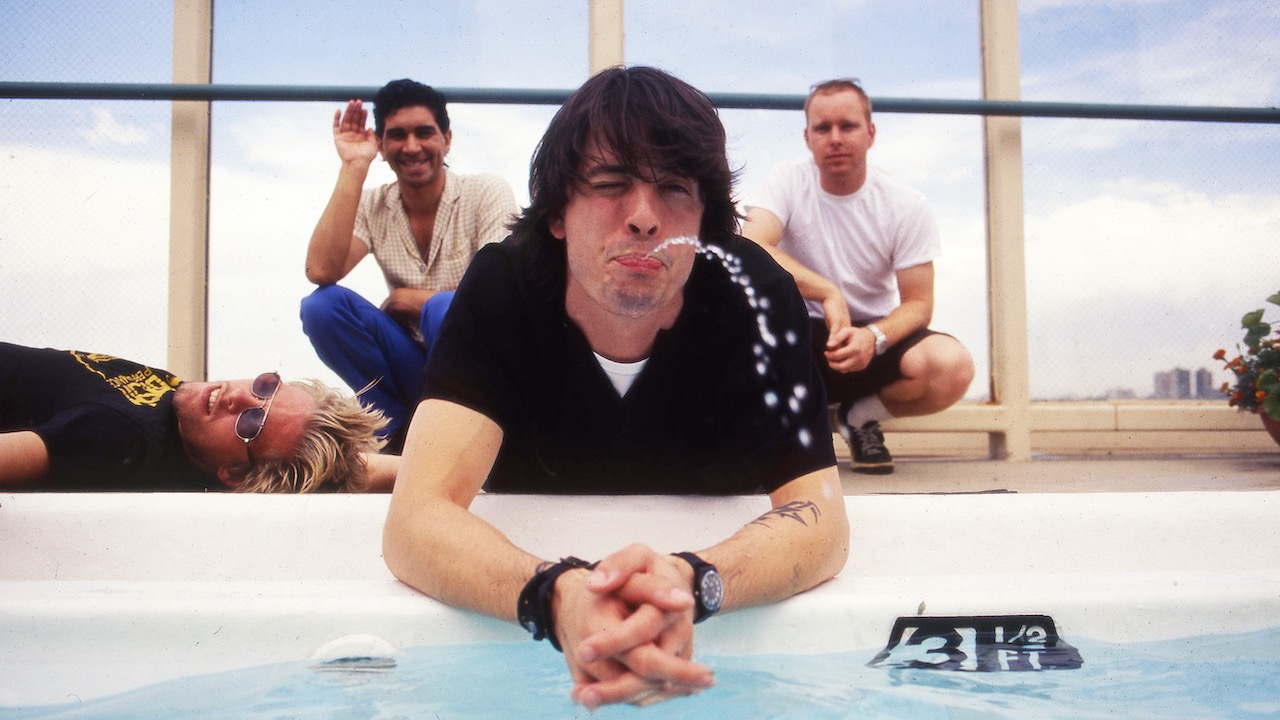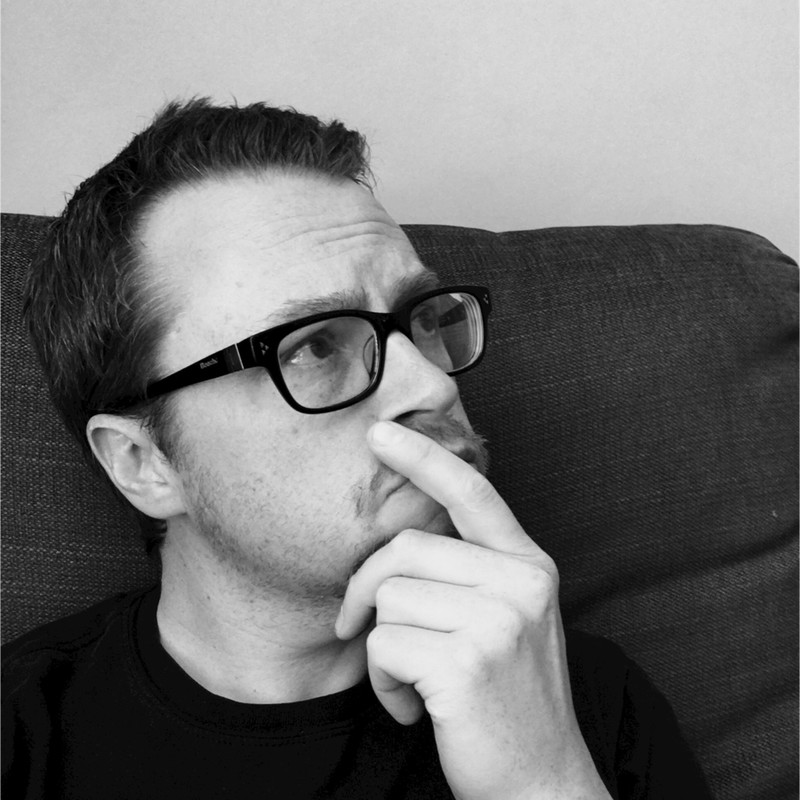Following the success of the self-titled Foo Fighters’ debut album – written and recorded by Dave Grohl, save for a guest cameo from The Afghan Whigs’ Greg Dulli – the frontman had big plans for his next full-length.
“I've made punk rock records, and they’re fun and great and it’s quick and there’s passion,” said Grohl. “But I did that with the first record. I’ve never made a big, proper rock record before, so why not? People just don't seem to do it anymore, so we might as well take a shot.”
To tour Foo Fighters' 1995 debut, Grohl had assembled a full band: his former Nirvana bandmate, ex-Germs guitarist Pat Smear, and the rhythm section from the recently-disbanded Sunny Day Real Estate, bassist Nate Mendel and drummer William Goldsmith. By the time they arrived at Bear Creek Studios – a residential facility on a sprawling 10-acre plot in Woodinville, Washington – in November 1996, the quartet had been bonded by 15 months of touring and were excited at the prospect of committing their new songs to tape: tracks Enough Space, Up In Arms, My Poor Brain and My Hero were already firmly bedded into their setlist, hinting at a bigger, more expansive palette.
To help realise his vision, Grohl enlisted Gil Norton, the Liverpool-born producer who’d worked with Echo & The Bunnymen and Pixies.
“I've admired Gil for a while,” Grohl told German magazine Visions. “I thought he'd be the right man for these songs because they've got potential to be great pop songs, and a little polish can do no harm.”
But Norton was a perfectionist in the studio, and clashed almost immediately with his new charges, who'd received their musical education from attitude-over-precision punk rock. As the producer captured then deleted take after take, tensions rose and the band’s morale dipped, as it became achingly apparent that their efforts were simply not up to scratch. Goldsmith and Mendel were particularly frustrated, not least when Norton's cutting Scouse wit saw them dubbed “the rhythmless section”.
The duo weren't alone in feeling the pressure. Grohl, who has described the words which informed the first Foo's album as “dumb”, was finding lyric writing for the new material a challenging process, more so with Norton breathing down his neck.
“He wouldn’t let me have dinner until I’d written some lyrics,” Grohl joked. “Every time I wrote a bad line I’d get 40 lashes. In no way do I consider myself a clever lyricist, or even a lyricist. I can't even write fucking postcards. How am I going to write songs that really grab someone?”
Where nonsensical, vague phrases were deemed suitable for Foo Fighters – name another song which references the acne medication Minicyn as on This Is A Call? – Grohl looked inward and wrote about things closer to home for album two, choosing to draw on his crumbling relationship with Jennifer Youngblood, his wife of just three years.
Indeed, the frontman’s stress during the initial recording sessions was further compacted a couple of weeks before Christmas, when he was served divorce papers by a legal courier. Happy holidays.
“Dave didn't get overly emotional about it with me, and I didn't see him crying or anything, but obviously it was a big part of his life and a concern at the time,” remembers Norton.
Licking his wounds, Grohl spent the holidays at his mother’s home in Virginia. Here he would pore over the recordings to figure out why their efforts were falling short of his expectations. During his stay, he asked his friend, Gray Matter frontman Geoff Turner, to give him the use of his WGNS studio to work on a couple of freshly-penned songs, Walking After You and Everlong.
“I was sort of in the middle of this intense emotional period," he revealed 24 years later, during a set recorded Studio 606 in Northridge, California. “And for whatever reason, the emotion or the feeling I got when I would play [Everlong’s] succession of chords sort of touched on whatever emotion that was.
“Without having it fully-formed, I put down a drum track, the guitars and the bass, and sang it into a microphone for the first time. The lyric and the melody, and where I was emotionally, it all made sense. I played the demo for Thurston [Moore] and Kim [Gordon] from Sonic Youth, because I was deathly afraid that I’d ripped [off] a Sonic Youth song somehow. They were like, ‘Why is that a demo? Why is it not on the album?’”
Beginning the new year with a change of scenery, the band and producer headed some 1140 miles south down the Pacific coast from Bear Creek Studios to Hollywood’s Grandmaster Recorders to continue the album.
The former cinema was used by Stevie Wonder as he prepped his classic 1976 album, Songs In The Key Of Life, and it was here that the Foo's second album truly began to take shape. Don’t go looking for it now, btw, as it’s since been redeveloped into an Italian restaurant.
With the clock ticking at this expensive facility, Grohl, losing patience with Goldsmith’s efforts, began to re-record some drum tracks. Goldsmith – who says he recorded 96 takes for one song, and spent 13 hours working on another – would end up with just two credits on the final recording: album opener Doll and Up in Arms.
“I had this idea that I was going to play drums because we were running out of time and William was having difficulty recording,” Grohl explained to writer Paul Brannigan in his book, This is a Call: The Life and Times of Dave Grohl. “I thought ‘OK, well, just to save time, I’m going to record these new songs, and then we’ll have Will re-do the other stuff.’
“William caught wind that I was going to do drums and basically just said, ‘Well, I don’t agree and I don’t want to be in the band. Most people are under the impression that I kicked him out of the band, but he absolutely quit.”
“I gave everything I could,” counters Goldsmith. “I couldn't believe at the end of it everything was done and I had got through it. But I just knew something wasn't right. Apparently Dave was going to re-record a few of the songs. I don't know if the producer told him to keep going, or what, but the next thing you know all of the work I had done was gone except for one or two of the tracks. It was brutal.”
Reeling from his perceived sense of betrayal, Goldsmith turned down the offer of remaining on board as the band’s live drummer, and shortly afterwards, Pat Smear walked too, citing the rigours of touring and press obligations as his reasons for his resignation.
“We had known for almost four months that Pat was going to leave the band,” Grohl later told iD. “He told us early on that he didn't want to tour anymore and he doesn’t like doing press and he hates flying, tons of stuff. Of course, we were totally shocked. Then I remembered, when Pat joined Nirvana, all of his friends were placing bets on how long he was going to last in that band. Some friends bet a week, or a month, or two months. This is the longest he's stayed in a band since the Germs.”
“My life was fucking going down the toilet,” Grohl added. “It was not a good time. My ex-wife was mixed up in it and she was not being cool at all. I was just trying to fucking stay out of everybody’s way, you know, just to finish what I’d started.”
The Colour And The Shape was released on May 20, 1997. The minimalist artwork resembles the Atomium, a structure built to commemorate the 1958 Brussels World’s Fair, but Grohl was only half-joking when he revealed that the cover almost featured a psychoanalyst’s couch.
“When we finally did sequence the album, I had this realisation that it runs like a therapy session,” said Grohl. “The first song, Doll, is all about your fear of entering into something you weren’t prepared for, I go through this whole therapy session, and I end up at the last track [New Way Home], when I realise that it’s okay, I can make my way through all of this, and I’m not that freaked out at the end."
When it came time to tour the album, Taylor Hawkins replaced the departed William Goldsmith, adding a new power to the group's live shows. But, with the benefit of hindsight, the tensions that rose between the original band and their producer were elemental in crafting a critically-acclaimed rock album which has since been certified platinum in North America, Australia and the UK.
Norton’s fastidious approach in the studio reaped rewards, not least on lead single Monkey Wrench, a choppy, uptempo blast which details the frontman’s thoughts about being trapped in a failing marriage. But it was Everlong, the last-minute demo captured during the loneliest of Christmases, which remains a career highlight and fan-favourite 25 years later.
“It opened up so many doors for us melodically, dynamically, it sort of gave us a reason to keep being a band for 12 or 13 more years,” said Grohl during a VH1 Storytellers performance in 2009. “I honestly think that if it weren't for this song, we probably wouldn't still be here.”
In documenting the frontman’s very own “winter of discontent” and the resilience shown when faced with myriad hurdles, TCATS is imbued with genuine depth and emotion: divorce, self-doubt and the prospect of losing half a band within the space of a few months would be enough to cause most people a nervous breakdown. Instead, the Foo Fighters emerged in triumph, with a stadium-sized alt-rock album which remains every bit as vital today.

